The Dose Response Multicentre Investigation on Fluid Assessment (DoReMIFA) in critically ill patients
- PMID: 27334608
- PMCID: PMC4918119
- DOI: 10.1186/s13054-016-1355-9
The Dose Response Multicentre Investigation on Fluid Assessment (DoReMIFA) in critically ill patients
Abstract
Background: The previously published "Dose Response Multicentre International Collaborative Initiative (DoReMi)" study concluded that the high mortality of critically ill patients with acute kidney injury (AKI) was unlikely to be related to an inadequate dose of renal replacement therapy (RRT) and other factors were contributing. This follow-up study aimed to investigate the impact of daily fluid balance and fluid accumulation on mortality of critically ill patients without AKI (N-AKI), with AKI (AKI) and with AKI on RRT (AKI-RRT) receiving an adequate dose of RRT.
Methods: We prospectively enrolled all consecutive patients admitted to 21 intensive care units (ICUs) from nine countries and collected baseline characteristics, comorbidities, severity of illness, presence of sepsis, daily physiologic parameters and fluid intake-output, AKI stage, need for RRT and survival status. Daily fluid balance was computed and fluid overload (FO) was defined as percentage of admission body weight (BW). Maximum fluid overload (MFO) was the peak value of FO.
Results: We analysed 1734 patients. A total of 991 (57 %) had N-AKI, 560 (32 %) had AKI but did not have RRT and 183 (11 %) had AKI-RRT. ICU mortality was 22.3 % in AKI patients and 5.6 % in those without AKI (p < 0.0001). Progressive fluid accumulation was seen in all three groups. Maximum fluid accumulation occurred on day 2 in N-AKI patients (2.8 % of BW), on day 3 in AKI patients not receiving RRT (4.3 % of BW) and on day 5 in AKI-RRT patients (7.9 % of BW). The main findings were: (1) the odds ratio (OR) for hospital mortality increased by 1.075 (95 % confidence interval 1.055-1.095) with every 1 % increase of MFO. When adjusting for severity of illness and AKI status, the OR changed to 1.044. This phenomenon was a continuum and independent of thresholds as previously reported. (2) Multivariate analysis confirmed that the speed of fluid accumulation was independently associated with ICU mortality. (3) Fluid accumulation increased significantly in the 3-day period prior to the diagnosis of AKI and peaked 3 days later.
Conclusions: In critically ill patients, the severity and speed of fluid accumulation are independent risk factors for ICU mortality. Fluid balance abnormality precedes and follows the diagnosis of AKI.
Keywords: AKI; Critical illness; Fluid overload; ICU; RRT.
Figures

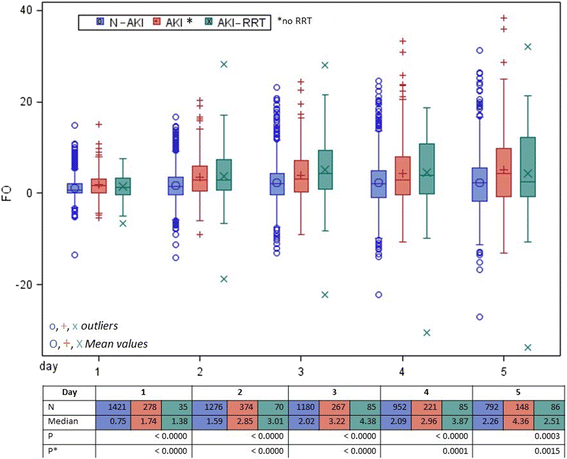
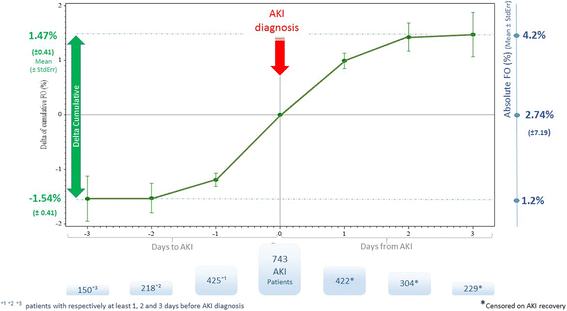


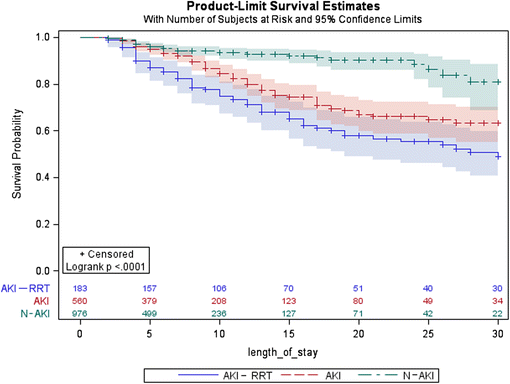
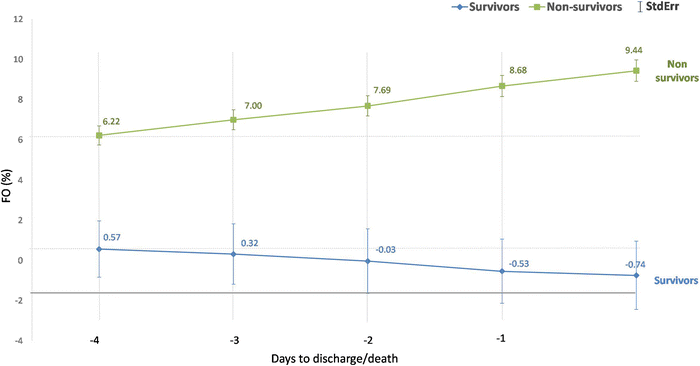
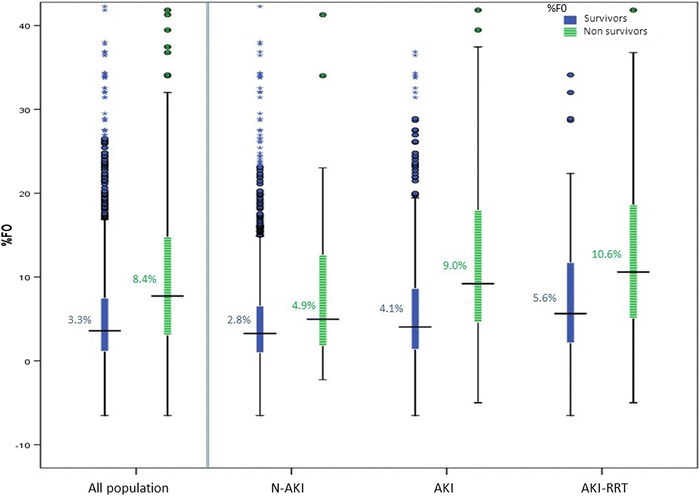
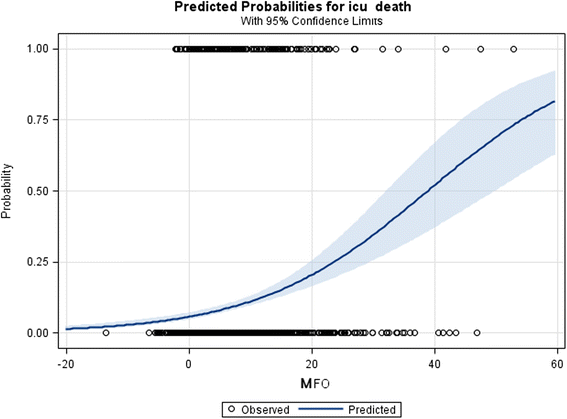
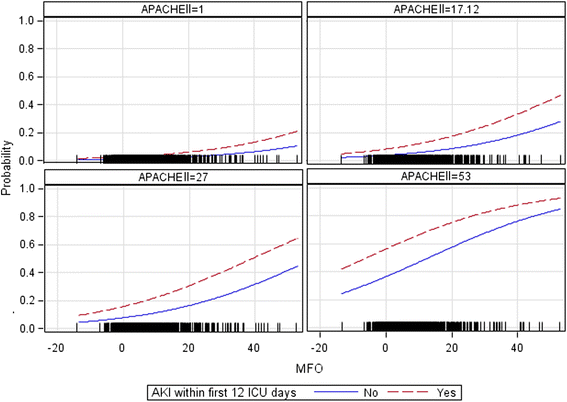
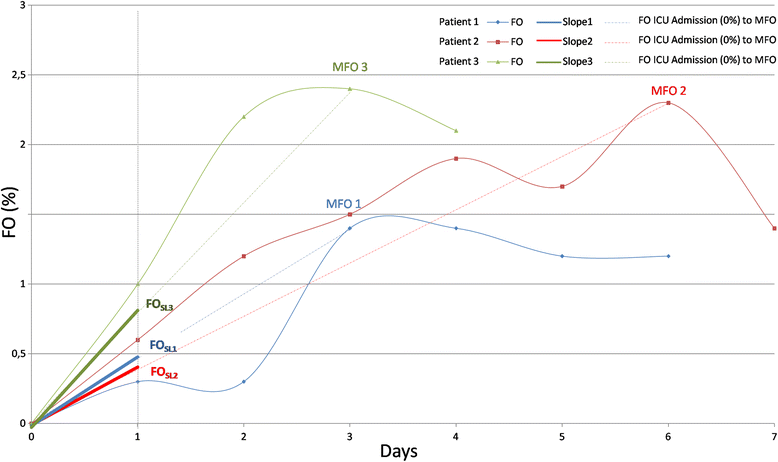
References
MeSH terms
LinkOut - more resources
Full Text Sources
Other Literature Sources

